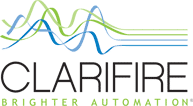The servicing industry has significantly transformed itself since the onset of the financial crisis. Beginning with the tsunami of delinquencies, servicers scrambled to combat the lack of loss mitigation options, fought against the inability to rapidly scale processes and creatively band-aided antiquated technology. Those that have survived the past decade have done so with a pioneering spirit, perseverance and sophisticated workflow.
Now that the dust has settled, pending deregulation has become a significant concern for servicers, as well as new requirements that are the outcome of Federal Housing Finance Agency (FHFA) 2018 strategies for the Government-Sponsored Enterprises (GSEs), and the effect of current fluctuations in mortgage servicing portfolio appetite. Without the capacity to readily assimilate ongoing industry change into back office processes and workflow, the resulting operational impact could be profound.

Proposed Legislation
Proposed regulation under the current administration easily threatens the stability of the servicing industry. Last June the U.S. House of Representatives passed the Financial CHOICE Act of 2017, H.R. 10. Although this bill subsequently died on the Senate floor, it sought to dismantle key provisions of the Dodd-Frank Wall Street Reform and Consumer Protection Act (Dodd-Frank), including reforms to the Financial Stability Act of 2010, Sarbanes-Oxley Act of 2002, Financial Institutions Reform, Recovery and Enforcement Act of 1989 (FIRREA), Truth in Lending Act (TILA), as well as the S.A.F.E. Mortgage Licensing Act of 2008.
The latest mortgage related bill, the Mortgage Choice Act of 2017, H.R. 1153, passed the House on February 8, 2018. The FHA In-Person Servicing Improvement Act of 2017, H.R. 125, has been stuck in committee since early last year. The extent of proposed regulatory amendment is far less reaching than that of the Financial CHOICE Act; however, despite reduced regulatory burden, deregulation will still come at a price for servicers.
With complex servicing programs, operational processes and oversight requirements in place, abandoning unneeded practices will take time and money. The overall effect on servicers is further complicated by multiple market participants that may issue peripheral rules, including state and local governments.
Mortgage Choice Act of 2017
The Mortgage Choice Act, which directs the CFPB to amend Dodd-Frank Qualified Mortgage (QM) regulations, adjusts point and fee calculations under the three percent cap restrictions. This will necessitate lenders modify all underlying data and calculations that define a loan as QM eligible, as well as updating Loan Estimate and Closing Disclosure calculations that pertain to homeowners insurance and affiliated title insurance charges, in particular for low-to-moderate income borrowers.
FHA In-Person Servicing Improvement Act of 2017
The FHA In-Person Servicing Improvement Act directly impacts servicers, establishing a pilot program to improve asset handling and retention of delinquent FHA insured loans by increasing direct communication with mortgagors. If implemented, servicing operational changes would at a minimum include modifying loan modification eligibility requirements, adjustments to pre-foreclosure sale and deed in lieu processes, as well as adding tracking for related communications, activities and timelines.
CLARIFIRE® Workflow
The servicing industry has exhibited its resiliency and aptitude for innovation, but as a servicer is your current technical infrastructure ready for deregulation and further disruption to operational practices? Now that a decade’s worth of regulation has been effectively integrated into system platforms, can your institution unfold, decouple and simplify complex rules? More importantly can you bear the cost and meet implementation timelines? Whether your organization is responding to deregulation, regulation, investor changes or one time industry events, the key to succeeding in this environment is unlocked with CLARIFIRE® workflow management for financial services.
A leader in servicing workflow technology for over a decade, CLARIFIRE delivers a sophisticated automated workflow engine that streamlines and integrates all your business rules. As industry and proprietary changes necessitate, business users can readily apply business rule modifications from an easy to use business facing interface.
CLARIFIRE offers servicers a financial services workflow solution that supports loss mitigation qualification, eligibility and exception determination with the flexibility and control needed to quickly respond to today’s changing environment. To learn more, visit us at eClarifire.com, or contact us directly at 866.222.3370.
Read These Stories Next
6 Questions to Ask When Selecting a Workflow Solution
Ease the Transition of Mortgage Servicing Rights with Workflow Automation
How Can You Be Compliant With So Many Regulations at Every Level
Jane Mason | Founder and CEO
Jane has applied her vast experience (over 25 years) operating process-driven businesses to successfully redefine client-focused service. Jane has worked with expert programmers to apply cutting-edge web-based technology to automate complex processes in industries such as Financial Services, Healthcare and enterprise workflow. Her vision confirms Clarifire's trajectory as a successful, scaling, Software-as-a-Service (SaaS) provider. A University of South Florida graduate, Jane has received many awards related to her entrepreneurial skills.




